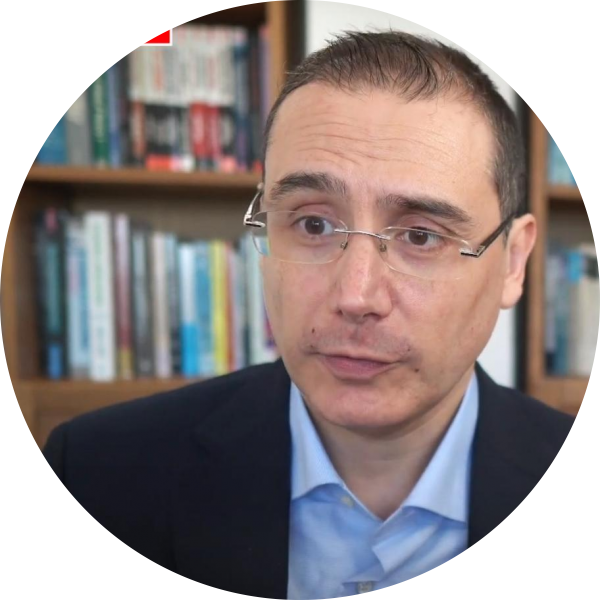Economie politică pozitivă
Primary tabs
Aceasta disciplină prezintă economia, politica economică și economia politică pozitivă studenților complet începători la materie. Stilul conversațional, dar precis, al acestei discipline este o modalitate excelentă de a prezenta știința economiei factorilor de decizie și analiștilor politici de mâine. Cursul este conceput pentru a oferi studenților o înțelegere conceptuală solidă a subiectului, folosind exemple contemporane relevante. Se remarcă printre toate celelalte discipline introductive de economie prin sublinierea modului în care politicile publice afectează activitatea economică și modul în care considerentele economice afectează deciziile conducătorilor politici.
Cursul acoperă cele mai importante subiecte ale economiei politice, reflectând în același timp structurile și instituțiile economice europene și adaptând referințele lingvistice și culturale la un public european. De exemplu, euro este moneda de bază la care se face referire pe parcursul disciplinei, în timp ce studiile de caz și exemplele se referă de multe ori la economia europeană și politicile UE. Aceste caracteristici sunt evidente atunci când disciplina se ocupă de politica agricolă comună a UE, politica comercială externă, politica în domeniul concurenței, TVA-ul sau politica monetară a Zonei Euro.
Abordarea acestei discipline este eminamente pozitivă, chiar și atunci când se discută chestiuni normative, cum ar fi dezbaterile despre dacă ar trebui impusă o carantină pentru a combate o epidemie, dacă prețul chiriilor rezidențiale ar trebui plafonat în anumite orașe sau dacă TVA-ul pentru alimente ar trebui redus. Abordarea pozitivă a disciplinei se bazează pe două premise. Pe de o parte, nu există o singură politică publică care să mulțumească pe toată lume, adică există întotdeauna câștigători și perdanți din orice politică dată. Pe de altă parte, nici factorii de decizie politică nu au nevoie de sprijinul tuturor pentru a-și putea pune în aplicare politicile publice și a rămâne la putere, ci doar de cel al unei anumite coaliții câștigătoare. Prin urmare, obținerea unei funcții de bunăstare socială nu este doar imposibilă dintr-o perspectivă științifică, ci nici nu are rost, indiferent dacă ești un factor de decizie sau un analist politic. De aceea, în aceasta disciplină nu încercăm să promovăm o anumită agendă de politici publice ci să transformăm întrebările normative în unele pozitive. De ce unii oameni favorizează, iar alții se opun unei carantine pentru a combate o pandemie? De ce unii oameni susțin controlul chiriilor, iar alții li se opun? De ce unii sunt în favoarea scăderii TVA-ului pentru alimente, în timp ce alții se opun? De ce unii lideri impun carantine? De ce unii primari impun controlul chiriilor în orașele lor? De ce unele guverne scad TVA-ul pentru alimente?
La sfârșitul semestrului, studenții ar trebui să fie capabili să înțeleagă efectele asupra piețelor ale unor politici publice, cum ar fi stabilirea unui preț minim, a unui plafon de preț, a unei cote, a unei subvenții sau a unui impozit; cauzele și efectele unui monopol sau ale unei externalității precum și politicile publice în privința lor; indicatoarele macroeconomice, creșterea economică, politica monetară și politica fiscală. Ar trebui să fie, de asemenea, conștienți de conflictele politice legate de politica economică și de explicațiile economice pozitive ale procesului de elaborare a politicilor. Nu în ultimul rând, ei își vor dezvolta unele abilități analitice generale care vor putea să fie transferate către studii ulterioare sau cariere neacademice. Întrebările și discuțiile săptămânale de seminar pe teme importante de actualitate îi vor încuraja, de asemenea, să-și dezvolte unele abilități manageriale generale, cum ar fi capacitatea de a cerceta independent, de a oferi și de a primi recenzare de la colegi și de a folosi discuții de grup pentru a elucida o problemă.
1. Arme sau unt: cu ce se ocupă economia? Decizii de grup și relații de putere: de ce economie politică? Afirmații pozitive și normative: Ghilotina lui Hume. Trei principii de economie politică pozitivă. Unu: Fericit cel care a putut să cunoască cauzele lucrurilor. Doi: Nu plouă niciodată pe placul tuturor. Trei: Dacă crezi că un conducător este prost, cel mai probabil prostul esti tu. De ce oamenii nu sunt de acord cu restricțiile COVID-19? (Mankiw, cap. 1-2; Krugman, cap. 1-2). 2. Cerere și ofertă: singurul model pe care trebuie să-l înveți. Cantitate și pret. Utilitate marginală și cost marginal. Mișcări de-a lungul unei curbe vizavi de deplasările curbei. Echilibrul pieței. Testarea ipotezelor: introducere în metoda științifică. Este criza actuală diferită de ceea anterioară? De ce se scumpește coșul cumparaturilor? (Mankiw, cap. 4; Krugman, cap. 3). 3. Cerere, oferta și politicile publice. Controlul prețurilor și raționalizare. De ce a se stabilește un salariu minim? De ce unele orașe plafonează scumpirea chiriilor? De ce guvernele introduc raționalizarea alimentelor în timp de război? De ce au introdus raționalizarea vaccinelor în timpul pandemiei? (Mankiw, cap. 6, pp. 111-120; Krugman, cap. 4). 4. Elasticitatea și aplicațiile sale. Poate o recoltă bună să fie o veste proastă pentru agricultori? De ce agricultorii acceptă reglementările ecologice ale UE? (Mankiw, cap. 5; Krugman, cap. 5). 5. Impozit sau amendă: cele două efecte ale unei impozit. Cotă, bază și încăsărea guvernului. Elasticitate și incidență fiscală. Sisteme fiscale optimale: suficiență, eficiență și echitate. O cotă redusă de TVA pentru alimente? Impozit redus pe venit pentru profesioniștii IT? Sunt amenzile UE în domeniul concurenței un impozit pentru giganțile tehnologice străine? (Mankiw, cap. 6: 120-128, cap. 8; Krugman, cap. 5). 6. Comerț internațional și protecție. Tarife, cote și bariere netarifare. Efectele unei taxe de import. Învingători și învinși ai comerțului. De ce impune UE o taxă de import de 42c pe kg de zahăr? (Mankiw, cap. 3+9; Krugman, cap. 19). 7. Externalități. Taxe pigouviene, cote și drepturi de poluare comercializabile. Rivalitate și excludere: bunuri private, bunuri publice și resurse comune. Bunuri de club. Care este dimensiunea optimală a clasei noastre? (Mankiw, cap. 10-11; Krugman, cap. 9). 8. Monopol. Efectele monopolului. Cauzele monopolului. Economii de scară și monopoluri naturale. Ar trebui UE să permită crearea unor campioni europeni? (Mankiw cap. 15; Krugman, cap. 8). 9. Economia bunăstării vs economia politică pozitivă. Surplusul consumatorului, surplusul producătorului și veniturile fiscale. Eficiența Pareto? Are sens să cumulăm bunăstarea națională? (Mankiw, cap. 7). 10. Măsurarea macroeconomiei. De ce macroeconomia este mai grea decât microeconomia. De ce teoria macroeconomică este mai instabilă decât ceea microeconomică. Producția, creșterea, ocuparea forței de muncă, inflația, distribuția venitului. Este Irlanda țara cea mai dezvoltată a UE? (Mankiw, cap. 23-24; Krugman, cap. 11). 11. Creștere economică. Modelul Harrod-Domar. Modelul de creștere neoclasic. Convergență condiționată. De ce România crește mai repede decât Germania? (Mankiw, cap. 25; Krugman, cap. 13). 12. Bani și politica monetară. Sistemul monetar. Multiplicatorul monetar. Creșterea banilor și inflația. Impozitul inflației. Sunt criptomonedele bani? Cine creează bani în România? (Mankiw, cap. 29-30; Krugman, cap. 16-17). 13. Politica fiscală. Efectul multiplicator. Efectul crowding-out sau de evicțiune. Echivalența ricardiană. Cât de mare este multiplicatorul cheltuielilor guvernamentale? Ciclul economic politic: partizan și oportunist. (Mankiw, cap. 33-34; Krugman, cap. 15). 14. Introducere în alegere publică: alegeri de grup, acțiune colectivă și instituții.
Mankiw, N. G. (2023). Principles of economics, 10th ed. Cengage learning; Krugman, P., Wells, R. (2023). Essentials of economics, 6th ed. New York: Worth; Acemoglu, D., Laibson, D. I., & List, J. A. (2021). Economics. 3rd ed. Pearson.




